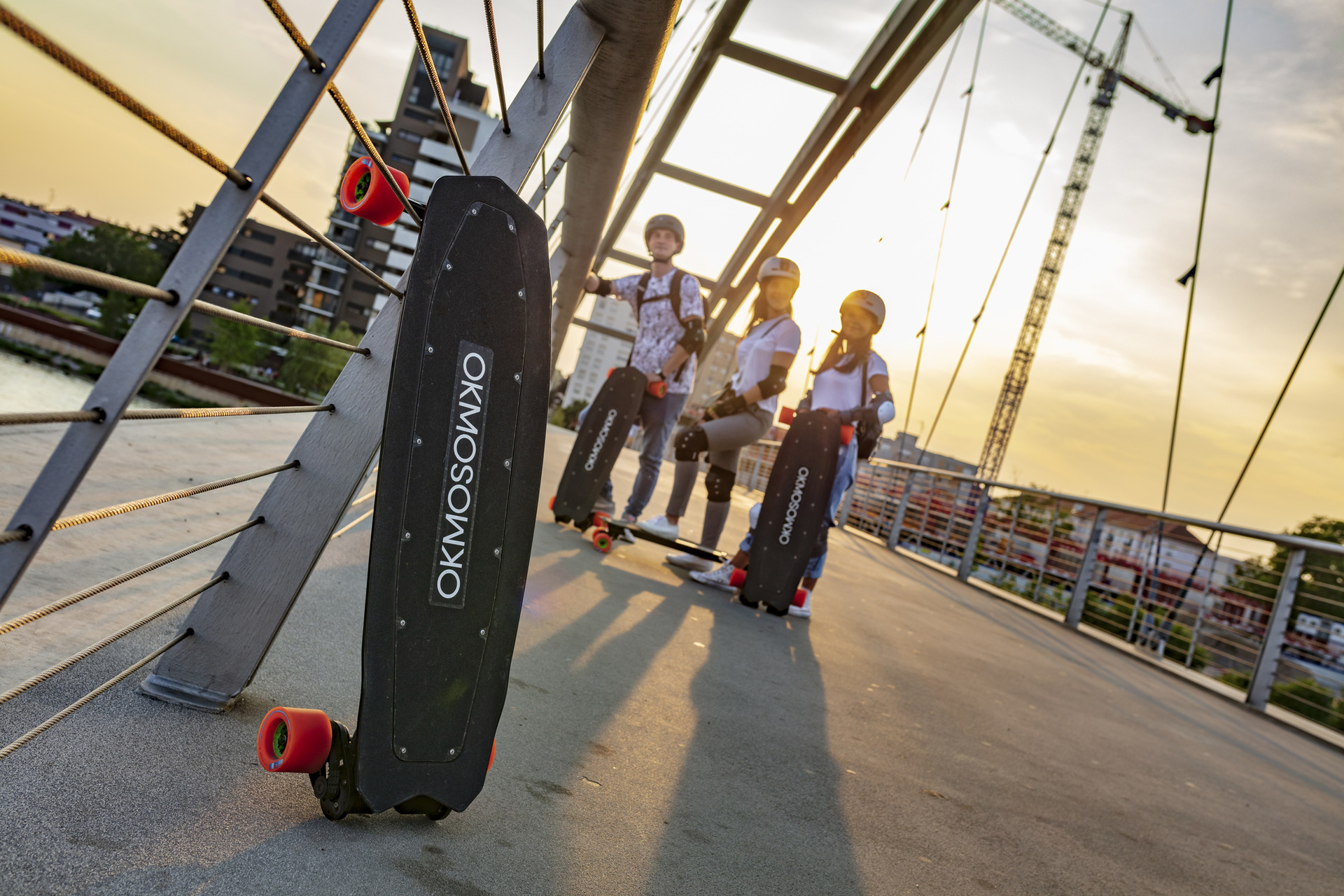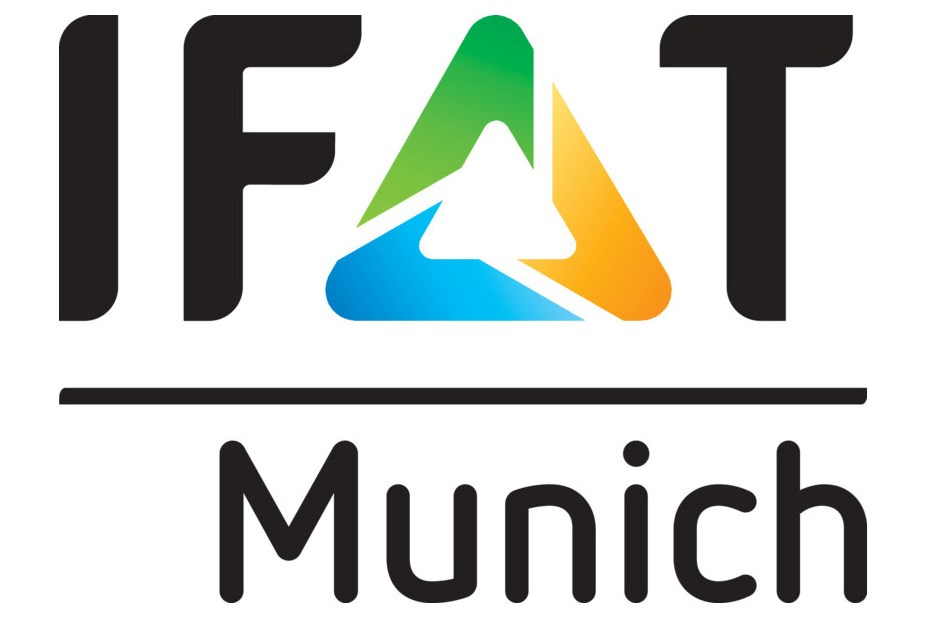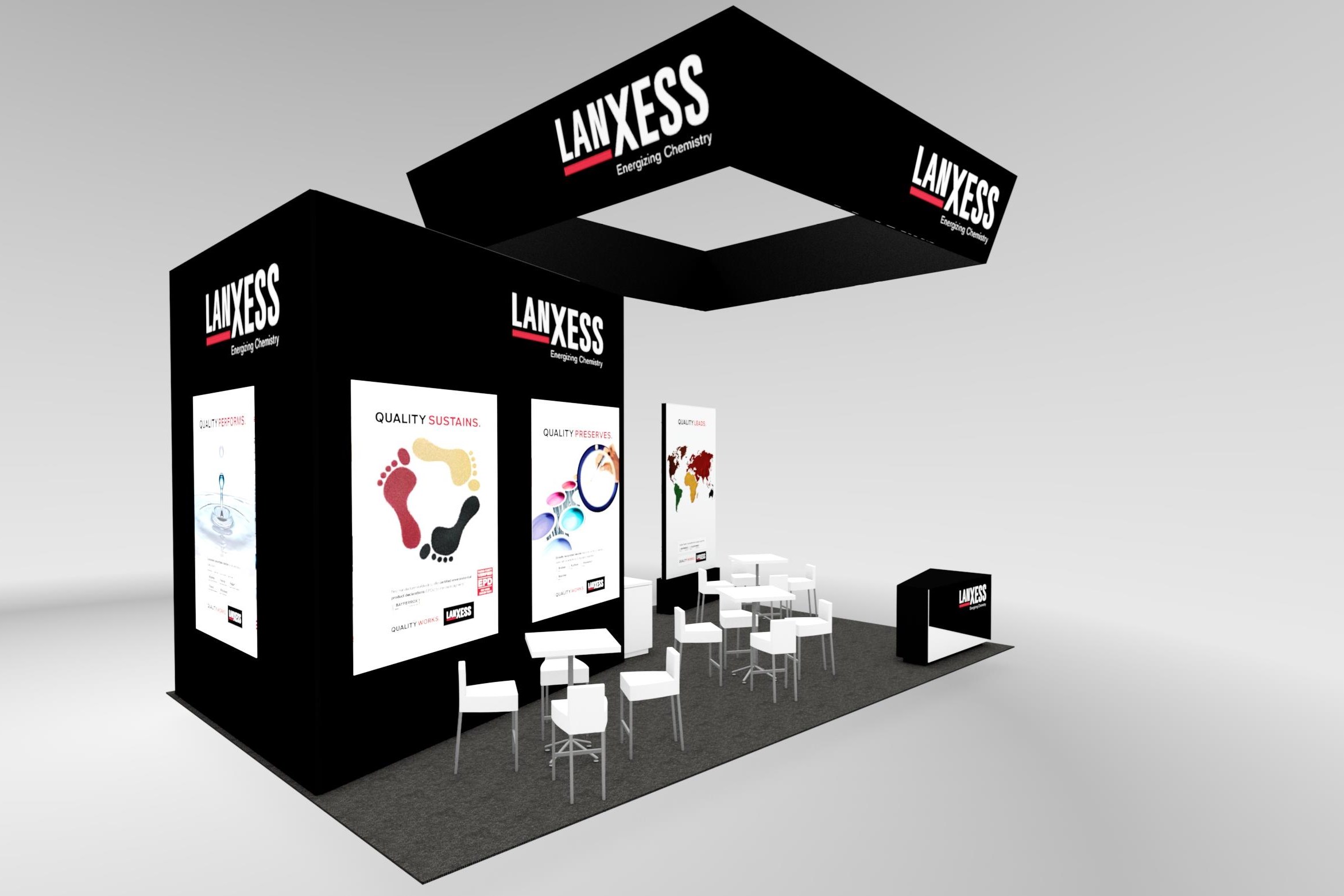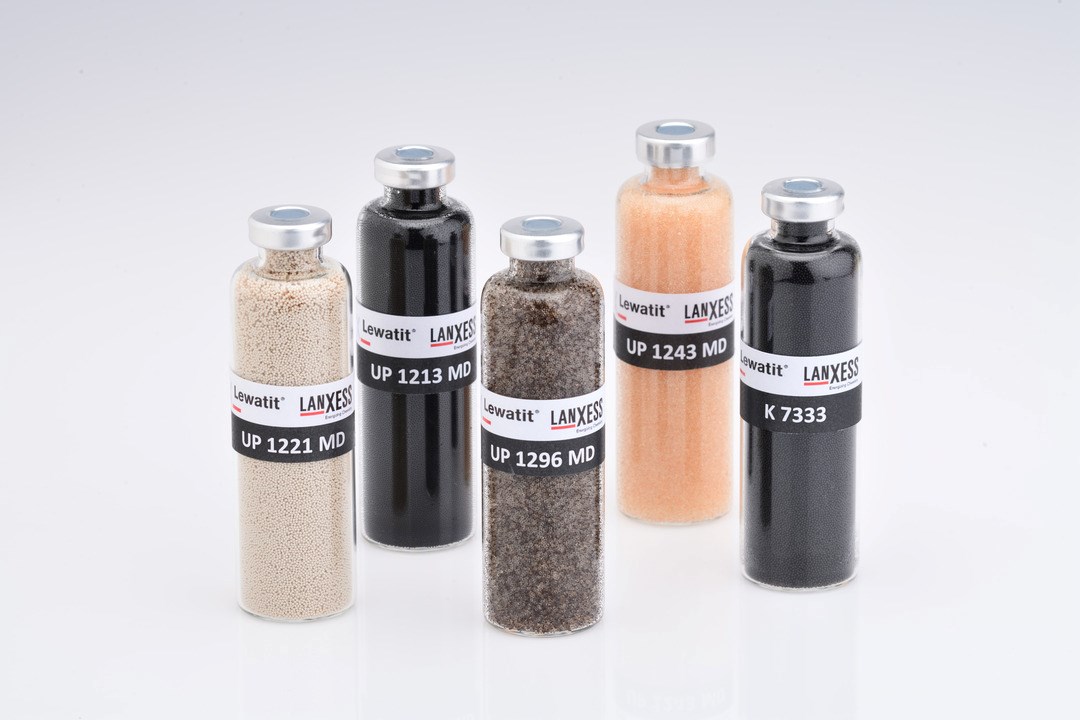Electric push for lots of driving fun
- Tepex composite from LANXESS used to create ultra-thin and lightweight electric skateboards
- Exceptionally high bending and torsional strength
- Numerous functions integrated in hybrid molding process
Electric skateboards are an effortless way to get around and offer their fans a thrill that is quite different from conventional skateboarding. They are also extremely challenging to design. The electric components, such as the battery and the motors that drive the wheels, need to be housed in very confined spaces to keep the board light, compact and easy for the rider to handle. The Tepex dynalite continuous-fiber-reinforced thermoplastic composites from LANXESS open up new opportunities in that regard. One example is provided by the OKMOS SL-01 electric skateboards from EMI SAS, a family business based in France.
Deck cast in one piece
Conventional skateboards usually consist of a relatively flat wooden board where the rider stands, also known as the deck. Under the deck on electric versions is a plastic box containing equipment including the battery. The EMI design, however, has a trough-shaped deck. With the exception of the motors, which are mounted on the back of the skateboard, this houses all the electric and electronic functions, including the battery. The trough is enclosed by a cover. Thanks to Tepex, the trough can be manufactured with a wall thickness of just three millimeters.
Extremely resilient
“Tepex is extremely resilient thanks to its high torsional and bending strength, and very lightweight into the bargain. The deck weighs just 2.5 kilograms,” says Jean-Marie Olivé, Technical Manager Application Development at the High Performance Materials (HPM) business unit at LANXESS. Despite the thin walls, the electric and electronic components in the deck are safely protected against impact as well as moisture.
Efficient and highly integrated manufacturing
The trough-shaped composite part is manufactured in a single hybrid molding process step. First of all, a robot inserts the metal base plate used to attach the truck axles into an injection molding tool. It then places a heated and plasticized Tepex section in the tool. In one operation, the section is then formed and the entire structure overmolded with a short-glass-fiber-reinforced plastic compound. “The process is very efficient and highly integrated, meaning that not only can the base plate be fixed in place, but fastening elements, wire ducting and the battery holder can also be mounted in the same operation. That means that unlike many conventional electric skateboards, the latter does not have to be screwed in separately,” explains Jules Staedelin, manager for research and development at EMI.
A perfect match between composite and injection-molded material
The composite section is made from polyamide-6-based Tepex dynalite 102-RG600(6), which is reinforced with six layers of continuous-glass-fiber rovings. The deck cover is also made from this material. LANXESS polyamide 6 Durethan BKV30H2.0EF is used for overmolding. This compound, which contains 30% short glass fibers by weight, is optimized precisely for this purpose. Its melt flows very easily , which means that even long flow paths can be implemented without any problems when the injection molding tool is being filled. You can find information about the Tepex product line and lightweight designs from LANXESS at www.tepex.com and https://lightweight.lanxess.com.
EMI has developed its new electric skateboards entirely in France, and it manufactures them there as well. The injection molding tool for the hybrid molding process is also based on in-house expertise. The company, located in Saint-Louis in Alsace, made its name with products such as continuous-fiber-reinforced plastic composite parts for lightweight vehicle structures. You can find more details about the new electric skateboards at www.okmos.fr/.
Not all countries permit electric skateboards to be ridden in public traffic areas. In Germany, for example, the Federal Ministry of Transport and Digital Infrastructure is working on regulations that would cover use on public roads, as small electric vehicles are viewed as a necessary element of modern mobility concepts.
Information for editors:
All global LANXESS news releases and their accompanying photos can be found at http://press.lanxess.com.
Recent photos of the Board of Management and other LANXESS image material are available at http://photos.lanxess.com.







